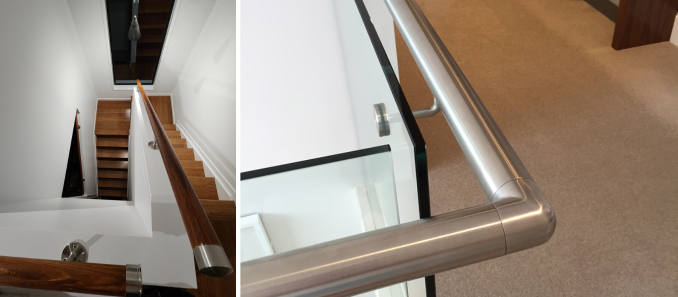Do Handrails Need To Be Continuous?
Do Handrails Need To Be Continuous?
In order to adhere to Australian building standards, all handrails or railings in stairwells must be continuous along each flight of stairs. This is true in both commercial and domestic application, as outlaid in The National Construction Code (NCC). These standards also apply to ramps, platforms and other situations where the "fall distance" of over 1m (where there is a difference of 1m or more between the floor and platform height).

For more information on continuous handrails, why and when they’re necessary and more information on Australian standards surrounding handrails and balustrades read on!
Disclaimer: The information in this article references the following building code: NCC 2019 BCA, however it is not a comprehensive overview of the code; therefore, we recommend that you consult your local council or a licensed builder before undertaking any work to ensure it is compliant with the current version of the building code. The information in this article is accurate at the time of posting, and may be superseded at any time.
When is a continuous handrail required?
For domestic purposes, a continuous handrail must be installed on any flight of stairs, ramps, landings or platforms where where there is a difference of 1m or more between the floor and platform height.
A handrail is required on at least one side of any stairway or ramp where these height requirements are met, and must be continuous, except where impractical or ending into a newel post, and extend for the full length of the flight/ramp.

What is meant by “continuous handrail”
Continuous means that the handrail must not be obstructed by walls, fittings etc. For instance, external fit bends and fittings may not be compliant.
In domestic settings the handrail can finish (stop and start) between flights, however in commercial and healthcare settings the handrail this is not the case. In these situations the handrail must also be continuous between flights and landings.
Are there any exceptions to the continuous handrail requirements?
Staircases, ramps and landings under 1m in height do not require a handrail or balustrade.
You might also be interested in these articles:
Top 5 Modern Staircase Handrail Profiles For New Builds & Renovations

